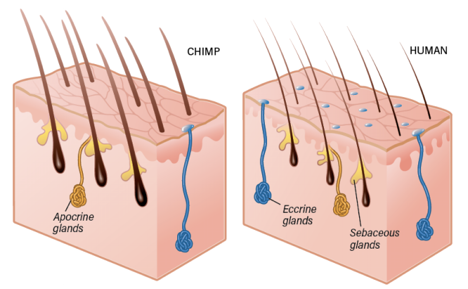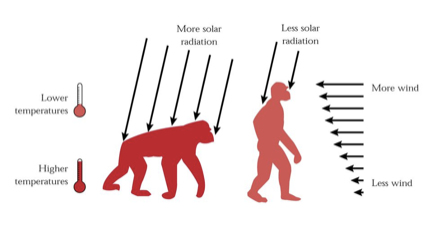Is Walking Upright an Adaptation to Beat the Heat?
Modern human beings (Homo sapiens) are one of the few mammals that are capable of running at a consistent pace for an extended period of time. This unique ability is all due to our highly effective heat-loss mechanisms: extremely efficient sweat glands and very fine hair. Compared to chimpanzees (Pan troglodytes), humans have the same density of sweat glands and hair. This would suggest a similar ability to cool down in hot environments, but human hair is much thinner and our sweat glands produce far more sweat. This means that humans of today are great at controlling our body temperature!

Human hair is thinner than chimp hair, but equally spaced.
One possible explanation for these features is bipedalism. Homo erectus is the first hominin that switched from mostly walking on four legs to mostly walking on two legs. Standing upright reduces exposure to sunlight, which may have been a useful cooling feature to early hominins scavenging for food during the hottest parts of the day. Specializing in this behavior could have encouraged additional biological adaptations, like cardiovascular changes, sweat, and hair development.

Quadrupeds are exposed to more solar radiation, just like sunbathers on the beach. Laying down exposes you to much more sunlight than the bipedal position of standing up.
By Mitch Boyer (’22)
